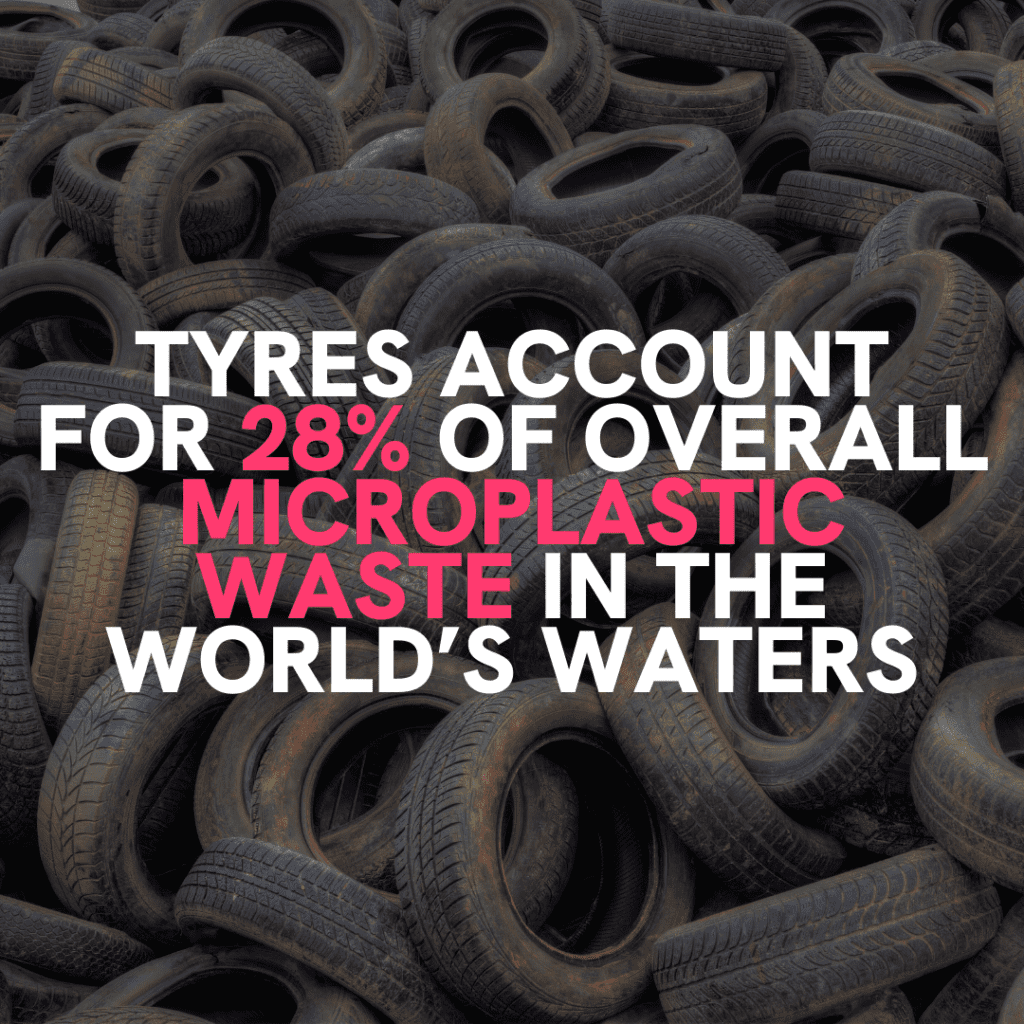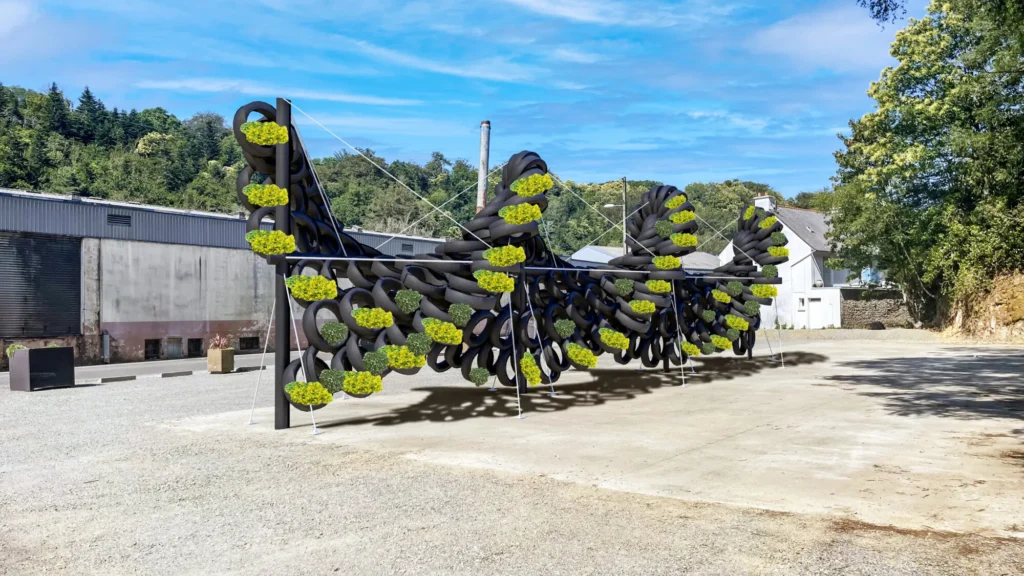
Oceans play a crucial and irreplaceable role in sustaining our planet – they cover 70% of the planet’s surface and regulate our climate, feed us, and generate most of the oxygen we breathe. Quite simply, without our oceans, there wouldn’t be life on planet Earth.
For millennia the world’s oceans have helped shape human history, culture, and art. Living and working on the north Cornish coast means that the ocean is part of Cornwall’s heritage and identity.
Yet over the last 200 years, humans have degraded or destroyed many habitats around the UK that are vital to a healthy ocean. Devastatingly, the United Nations estimates that 50% of the world’s marine species face extinction by the turn of the century.
We know that overfishing, pollution and the introduction of invasive species have left the ocean in a perilous state. But did you know that car tyres are actually one of the most common (yet little-known) plastic polluters on the planet?

Tyres – The Unseen Microplastic Ocean Polluter
When you think of cars and pollution, it’s most likely that you think about the CO2 caused by their emissions. The tyres on our vehicles are made of natural rubber so it’s sometimes easy to skirt just how much they contribute to pollution in our oceans.
Yet a 2017 study by Pieter Jan Kole at The Open University of The Netherlands estimated that tyres account for as much as 28 per cent of overall microplastic waste in the world’s waters. With 4 billion tyres already in landfills worldwide and 1 billion added annually, the sheer magnitude of the tyre crisis is staggering. Joao Sousa, who studies marine plastics at the International Union for Conservation of Nature, says
“Tyres rank really high in terms of contribution to the microplastics problem”.
But How Do Tyres End Up As Microplastics In Our Oceans?
We all use tyres, but how many of us think about what happens after we throw them away or wear them out on the roads?
Tread patterns in modern tyres help vehicles have a better grip on the road and improve handling, manoeuvring, and braking. But unfortunately for our oceans, better grip also means more abrasion, which in turn causes friction that makes bits of our car tyres detach. These tiny tyre microplastics caused by road wear get left all over our roads and washed by rain into our waterways, which ultimately ends up polluting our oceans.
Friends of the Earth say:
“An astonishing half a million tonnes of tyre-wear fragments are released every year across Europe. The UK’s share of that is around 68,000 tonnes with up to 19,000 tonnes of microplastic tyre pollution getting into our waterways, rivers and seas each year.”
When you consider how many billions of cars travel on the world’s roads every day, you can begin to understand the very real enormity of the problem.
Tackling the Tyre Recycling Crisis: An Eco-Artist’s Mission to Raise Awareness
Another of our clients doing amazing things for the planet is internationally renowned environmental artist John K Melvin whose work highlights the often-overlooked environmental impact of tyres. His message about the microplastics caused by tyres hit us so deeply, that we sponsored his latest sculpture on the subject.
John K Melvin is a contemporary American-born multi-disciplinary public artist who believes that public art has the capacity to transform society and drive positive change. His works of art are created to invoke conversations surrounding the issues which are most pertinently affecting the future of our planet. By tackling this complex issue head-on and leveraging his platform as an eco-artist, Melvin is poised to make a significant impact in raising awareness and catalysing solutions to the tyre recycling crisis.
Installed on the former industrial site which was historically a karting circuit, his most recent public sculpture in Pont-Aven, France is entitled ‘Ça Roule’ (‘It Rolls’).
John says,
“Ça Roule invites public debate on the environmental and societal impact of our consumer choices. By using used and abandoned tyres, I seek to raise awareness and challenge the ecological and social responsibilities linked to the use of tyres and omnipresent materials which prove extremely problematic at the end of their life”.
Alternative design or reuse solutions are emerging but not yet viable. John’s sculpture was designed to encourage the development of sustainable alternatives for both design and recycling. Real change can come about if we challenge the people who make tyres to change the composites and rethink how tyres are produced.
The tyre industry has shown limited technological advancements in addressing the problem and much more needs to be done. The global dependence on tyres is the primary stumbling block, but change needs to happen on a massive scale if we are to tackle the problem.

Can We Reinvent the Wheel, or Is It The End of the Road for Tyres?
Due to the way modern tyres are made (19% natural rubber, 24% synthetic rubber and the rest of metal and other compounds), producing tyres has a monumental environmental impact. From continued deforestation to the climate-harming fossil fuels used to make synthetic rubbers (7 gallons of oil are needed per car tyre!), tyres pose a huge threat worldwide.
A scientific study found that the environmental and human health risks associated with the production, use, and disposal of tyres are significant. The proprietary nature of tyre materials makes it difficult for consumer protection agencies to regulate their use, potentially exposing the public to carcinogenic substances.
There is currently a real lack of viable recycling options for tyres. Current methods, such as using ground-up tyres for children’s playgrounds, are simply ineffective when you consider the enormous scale of the problem. Even using crushed recycled tyres to create paving and driveways can create more abrasive surfaces, which generate more microplastics and further exacerbates the environmental problem.
Through his work, artist John K Melvin cites the need for the “cradle to cradle” design method, an innovative approach that invites us to rethink the way we design our products, by anticipating their future from the start, with their end in mind! We need to spearhead this design methodology if we are to protect future generations.
No matter if you live on the coast or in the desert, our planet’s oceans affect every single one of us. The imminent threat of tyres to our oceans is very real, and action is needed. We must work together to start the conversation, lobbying the manufacturing bodies to make a concerted effort to turn the tide. Our oceans depend on it.





